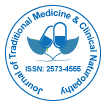The Ancient Art of Healing: Exploring Chinese Acupuncture
Received: 06-Nov-2023 / Manuscript No. JHAM-23-119286 / Editor assigned: 09-Nov-2023 / PreQC No. JHAM-23-119286 (PQ) / Reviewed: 23-Nov-2023 / QC No. JHAM-23-119286 / Revised: 02-Jun-2025 / Manuscript No. JHAM-23-119286 (R) / Published Date: 09-Jun-2025
Abstract
Chinese acupuncture an integral component of Traditional Chinese Medicine (TCM), has been practiced for over two millennia and is gaining recognition worldwide for its effectiveness in treating a wide range of ailments. This ancient healing art involves the insertion of thin, sterile needles into specific points on the body to stimulate energy flow and promote natural healing. In this article, we will delve into the history, principles, techniques, and modern applications of Chinese acupuncture.
Keywords: Chinese acupuncture; Medicine; Yin and Yang
Introduction
The roots of Chinese acupuncture can be traced back to ancient China, with records dating as far back as the Shang Dynasty (16th to 11th centuries BCE). These early practitioners believed that the body's vital energy, known as "Qi" (pronounced "chee"), flows through a network of channels or meridians, and disruptions in this flow lead to illness. Acupuncture was developed as a means to restore balance and harmony within the body.
Description
Principles of Chinese acupuncture
Qi and meridians: Central to Chinese acupuncture is the concept of Qi, an invisible energy that circulates through the body along a network of meridians. There are 12 primary meridians and 8 extraordinary meridians. Each meridian is associated with specific organs and functions.
Yin and yang: Acupuncture seeks to balance the opposing forces of Yin (dark, passive) and Yang (light, active) within the body. Disease is often viewed as an imbalance between these forces, and acupuncture aims to restore equilibrium.
Acupuncture points: There are over 2,000 acupuncture points along the meridians. These points are carefully selected based on the patient's condition and are where the thin needles are inserted. Acupuncturists are trained to identify the precise locations of these points.
Techniques of Chinese acupuncture
Needle insertion: Fine, sterile needles are inserted into acupuncture points at various depths. The sensation experienced by the patient can vary from a mild tingling to a deep ache, but it should not be painful.
Moxibustion: This technique involves burning the dried herb mugwort (moxa) near the acupuncture points to warm and stimulate them. It is often used in conjunction with needle insertion.
Cupping: Cupping therapy involves placing heated glass or plastic cups on the skin to create suction. This can help increase blood flow and alleviate pain.
Electro acupuncture: Modern advancements have introduced electrical stimulation to acupuncture needles, enhancing the therapeutic effects of treatment.
Modern applications and research
Chinese acupuncture has gained recognition in Western countries as an alternative or complementary therapy for various conditions. While its effectiveness in some areas is well-documented, more research is needed to understand the mechanisms behind acupuncture's therapeutic benefits. Here are some modern applications:
Pain management: Acupuncture is often used to manage chronic pain conditions, including back pain, osteoarthritis, and migraines. It is believed to stimulate the release of endorphins, the body's natural painkillers.
Stress and anxiety: Acupuncture can promote relaxation and reduce stress and anxiety. Some studies suggest that it may influence the release of neurotransmitters that affect mood.
Fertility and reproductive health: Acupuncture is used to support fertility treatments and address menstrual irregularities. It may improve blood flow to the reproductive organs and regulate hormonal imbalances.
Digestive disorders: Acupuncture has shown promise in alleviating symptoms of digestive disorders such as Irritable Bowel Syndrome (IBS) and acid reflux.
Addiction and smoking cessation: Acupuncture is sometimes used as part of addiction treatment programs to reduce cravings and withdrawal symptoms.
Chinese acupuncture is a traditional healing practice that has been used for thousands of years in China and is now gaining popularity worldwide. It involves the insertion of thin needles into specific points on the body to stimulate energy flow and promote natural healing. While acupuncture has been a subject of fascination and debate, there are several key points to consider when discussing this ancient therapeutic technique:
Acupuncture has a rich history that dates back over two millennia. Its origins are rooted in ancient Chinese philosophy and the belief in the flow of vital energy, or Qi, through the body's meridians. The historical context of acupuncture provides insight into its enduring appeal and continued relevance in modern healthcare. Acupuncture is a fundamental component of Traditional Chinese Medicine (TCM), which encompasses a holistic approach to health and wellness. TCM views the body as a dynamic system where balance and harmony are essential for optimal functioning. Acupuncture is used to restore this balance by adjusting the flow of Qi.
Conclusion
Chinese acupuncture, deeply rooted in ancient Chinese philosophy and traditional medicine, continues to evolve as a respected therapeutic practice in the modern world. While it may not be a panacea, its holistic approach to healing, focusing on the balance of Qi, Yin, and Yang, has provided relief and improved quality of life for countless individuals. As research continues to explore its mechanisms and applications, acupuncture remains a valuable and complementary option in the realm of healthcare, offering hope and healing to those who seek it.
Citation: James S (2025) The Ancient Art of Healing: Exploring Chinese Acupuncture. J Tradit Med Clin Natur 14: 496.
Copyright: © 2025 James S. This is an open-access article distributed under the terms of the Creative Commons Attribution License, which permits unrestricted use, distribution and reproduction in any medium, provided the original author and source are credited.
Select your language of interest to view the total content in your interested language
Share This Article
Recommended Journals
Open Access Journals
Article Usage
- Total views: 267
- [From(publication date): 0-0 - Dec 19, 2025]
- Breakdown by view type
- HTML page views: 184
- PDF downloads: 83
